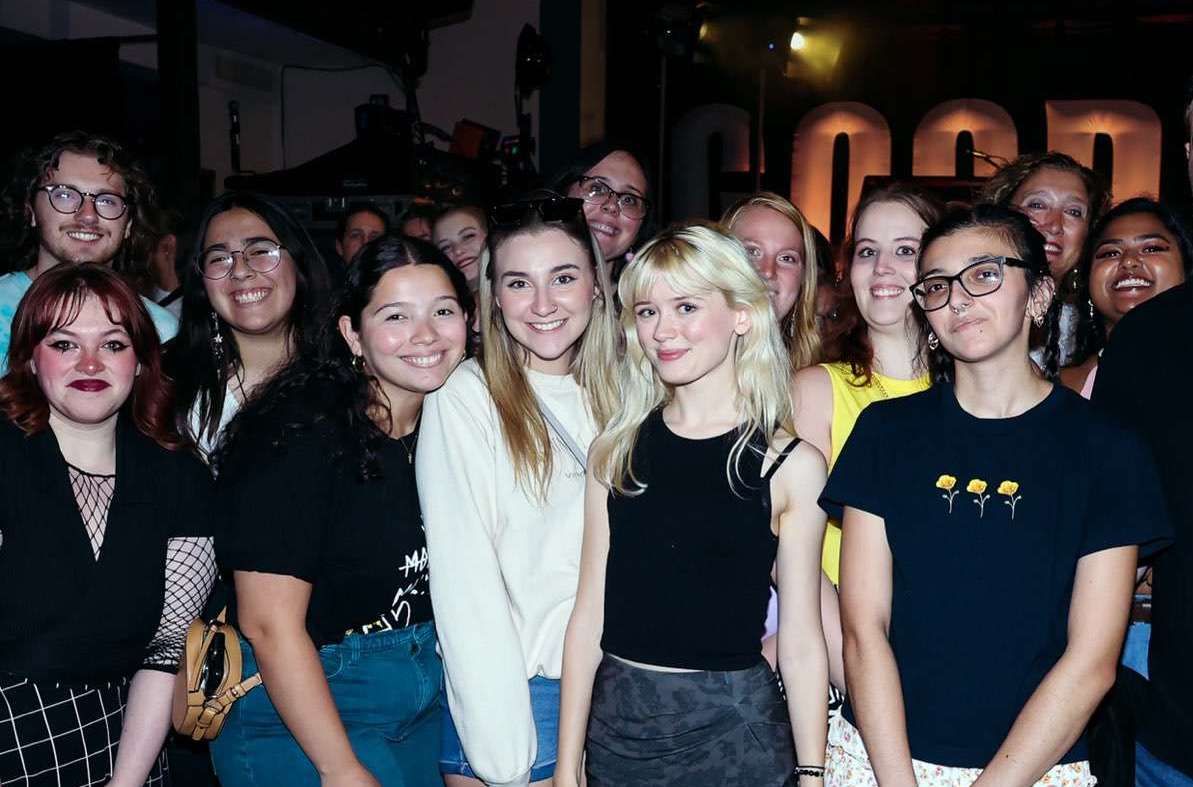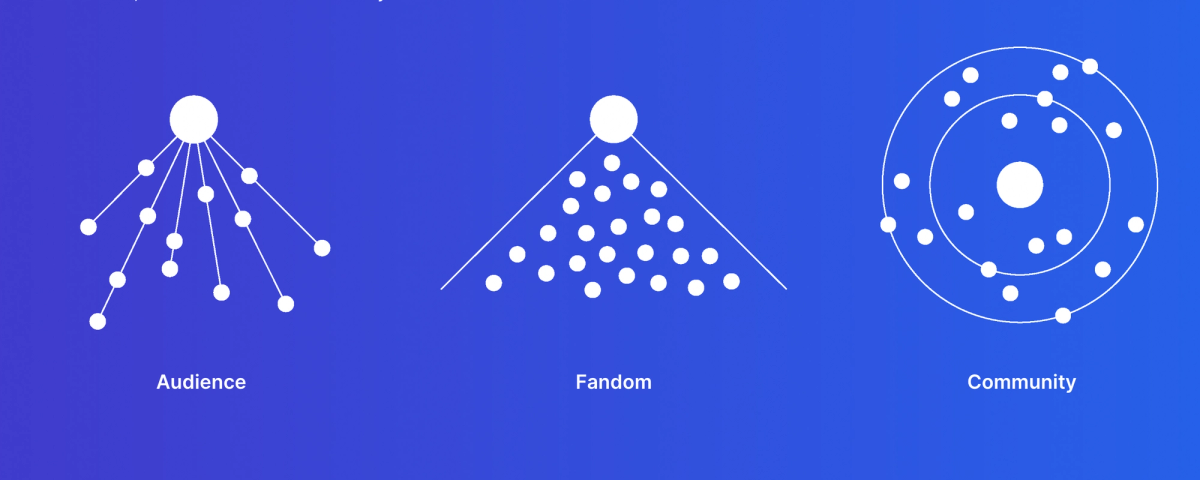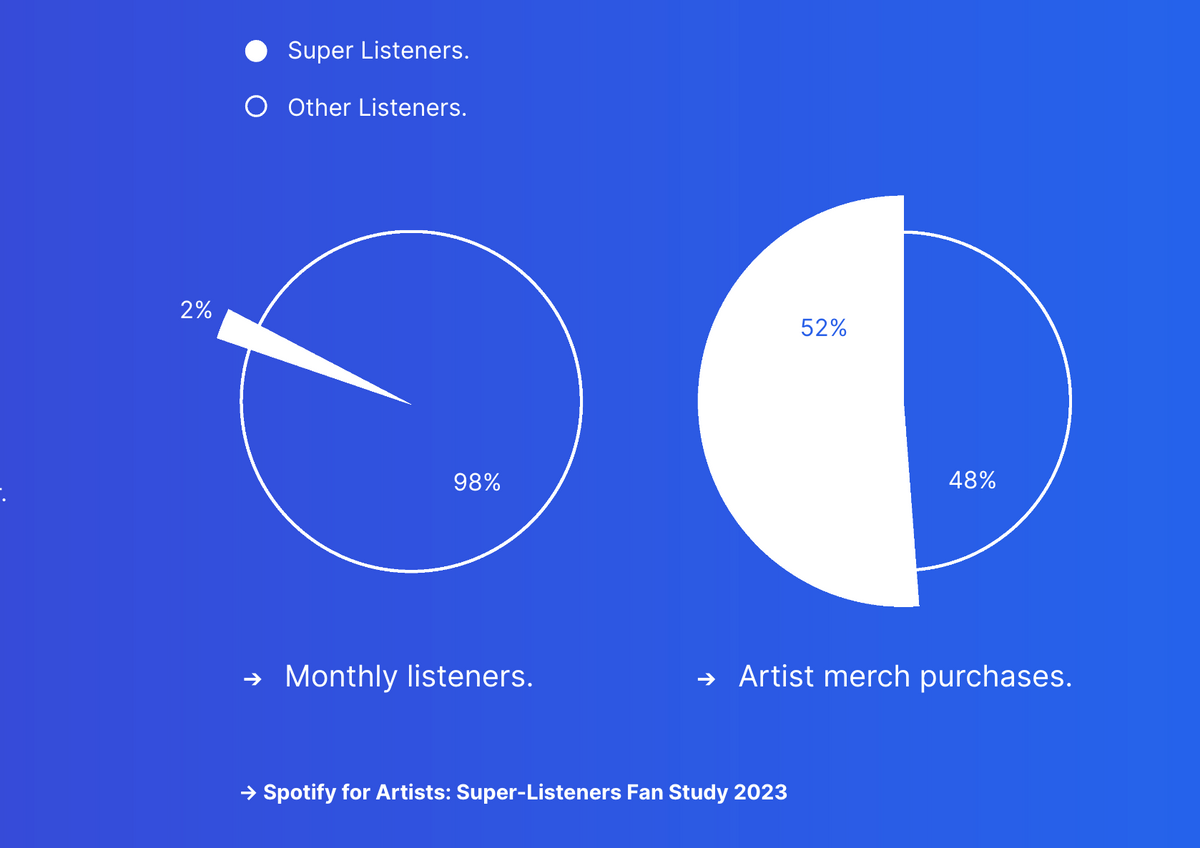Beyond fan clubs: How communities drive music business impact

Taylor Swift is the queen of community. The singer - whose latest album Midnights smashed records in streaming, vinyl sales and Billboard charts - has built an accessible and intimate relationship with fans that leads to undying loyalty from a global community of Swifties.
Community is the keyword here. You might hear words like "audience", "fandom" and "community" used interchangeably. But at Levellr, when we work with clients from Fall Out Boy to Starbucks, we differentiate between these groups because we see crucial differences between different types of fans - nuances which add up to powerful and intensely valuable opportunities.
An audience is everyone who shows an interest in a performing artist, podcast, sports team or any other brand. These fans might follow a creator via newsletter or social media, but they don’t have relationships with one another. The only shared similarity is that they subscribe to the same content.
Fandom takes things up a notch. This is a group that appears loosely organised, perhaps by joining fan pages or following hashtags. They may talk to each other from time to time but are commonly segmented into smaller groups within a space.
And then there's community.

A community is a group of people who are doing something together. United around their passion for an artist or brand, they share a purpose, vision and likely even a goal. Even if their level of engagement differs from passive follower to super-engaged superfans, their decentralised relationships with each other elevate a community to become essential for any brand.
That's where Discord comes in.
In a Rolling Stone interview in June, music producer Kenny Beats described how he'd noticed his crowds (and merch sales) swelling. When he met fans, he recognised them by their usernames on his 135,000-strong Discord community. That relationship directly drives real results - in ticket and merch sales - in a way that time spent broadcasting on YouTube and Twitch can't.
“I’m just wondering what you’re really getting back from that time spent on TikTok or one of these other apps," Kenny Beats told Rolling Stone. "Because I can tell you what I get back from Discord. I can tell you what my shows look like now."
Community is crucial
The most loyal fans spend exponentially more on gig tickets, albums, merch and more. According to a Spotify report spotlighting the value of superfans, the passionate fans who make up the top 2% of an artist’s streams buy 52% of merch sales.
For artists like Fall Out Boy, Fred again.. and Maisie Peters, that means the benefits of community are huge. Levellr works with these artists and their teams - not to mention various podcasts, sports teams and brands including Starbucks - to set up, manage and monetise their dedicated Discord communities.
In a community, artists and brands build anticipation for upcoming releases and events, stoking the buzz with activations before and during, then keeping the excitement going after the event as fans share their own community-generated content.The Discord community founded by artist and producer Fred again.. is a great example. Fred encourages fans to create their own music and even to collaborate with each other. Artists like Fred and Leigh-Anne have even invited fans to contribute samples and voice notes, so fans actually become part of their favourite artist’s creative content.
OPIA is another community built around collaboration, where the founding artist - Bafta-winning composer Ólafur Arnalds - provides a foundation for members to create and collaborate. Arnalds was so impressed by the music of Sofi Paez, a member of the community, that he's invited her to join him for a special concert in Berlin celebrating the community.
Community drives results
Conversation and engagement like this is more than just a nice thing to have for an artist. Time and again, we've seen Levellr-supported Discord communities smash the industry average number of fans opting in to marketing consent. Fall Out Boy's Discord launch saw 10,000 fans sign up in the first 48 hours, and more than half opted in to emails (the average is 2%). With numbers like that, a brand can collect a huge marketing list before the members have made a single post.
Once a community is up and running, fan fever around activations and events builds awareness and excitement for a campaign. Whether nudged by superfan moderators or spontaneously, community members become brand evangelists creating a thunderclap of free organic word-of-mouth promotion on wider social channels.
For example, to promote Maisie Peters' latest album The Good Witch, Levellr built a custom chatbot which dropped puzzles into the Discord and unlocked snippets of new songs. This puzzle quest and some exclusive Tarot cards for each song were among the factors pushing fans to get behind Maisie Peters' album, which shot to no. 1 with live show tickets selling out in seconds.
When a community takes off, members interact and bond and form decentralised relationships. All it takes is for the artist or brand to start things off. That can mean anything from prompting conversations and inviting creativity to building custom activations or offering up exclusive rewards. When Anne-Marie shared a video message about the chart battle for her song Unhealthy, it drove increased streams and fan-led listening parties.
Community members can even provide real-time feedback on future products, for example by voting on merch.

On top of that, community is a well of potential content for a brand to draw upon. Community-generated content (CGC) spikes massively after shows like Fred again.. at Ally Pally, as fans excitedly share their photos and videos from the shows and their own meet-ups. While fans do share their photos and videos on social media, it's much harder for brands to surface relevant user-generated content and seek permission to re-use. In a community, CGC is gathered in one place, and with Levellr's dashboard tool, the brand can see it in one place and easily involve the fan who created it.
For brands, this is authentic, engaging and free material for social media or marketing - with the blessing of fans who love seeing their contributions become part of the artist's journey.
Gone are the days when it was a one-way relationship with an artist broadcasting to an undifferentiated audience. We've even moved beyond the days of fandom, which sees audiences segmented into groups that may love an artist or brand but haven't been primed to become superfans. A fandom that isn't nurtured is an untapped opportunity: when a community is founded and nurtured, fans become superfans.
In a community, members become a superfan army ready to unite behind the artist or brand and help write the next chapter.
Your superfans are waiting. Contact Levellr today to find out how you can build a community which works for your brand.
